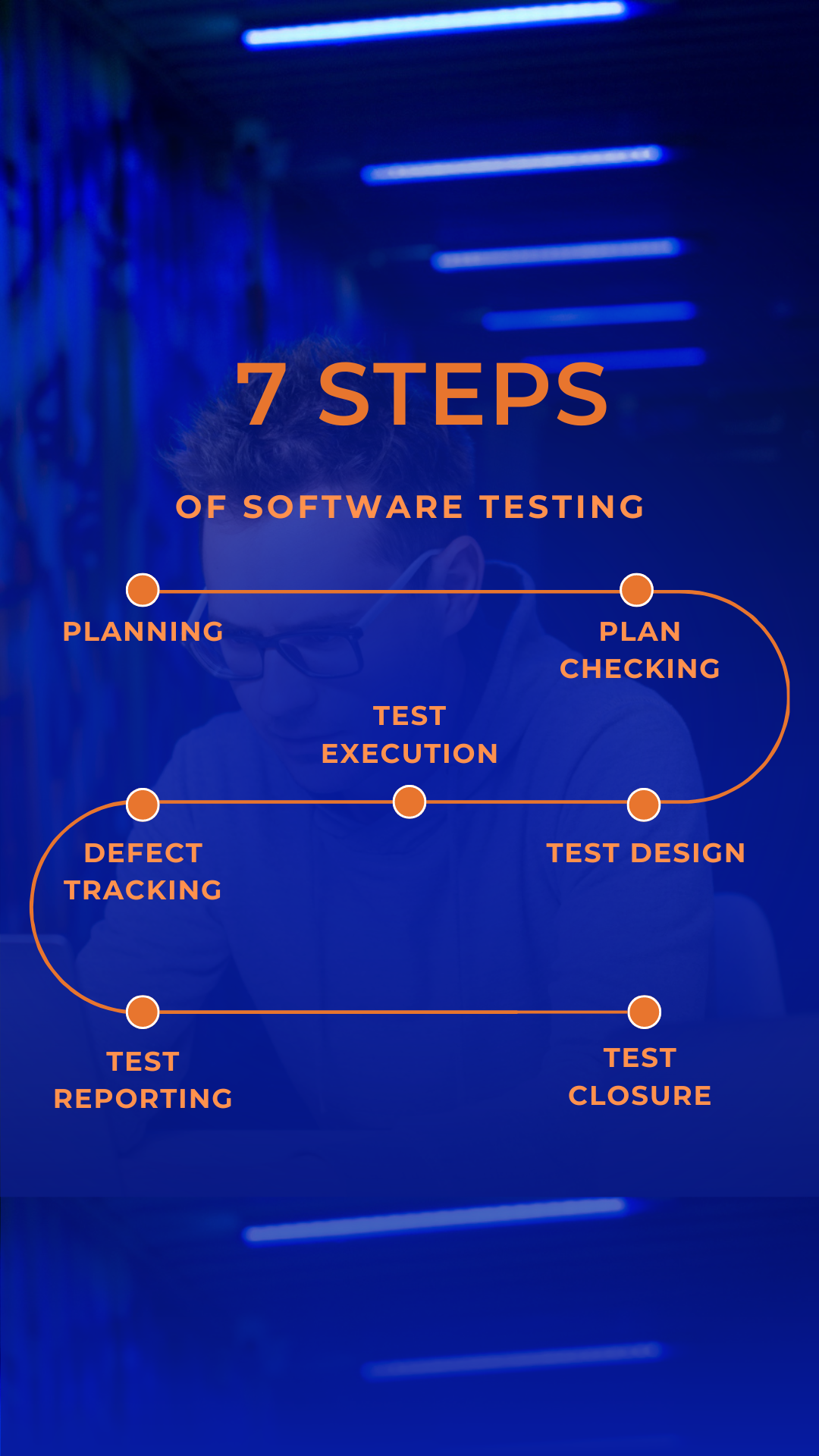Web developers’ work is hard to overestimate. Because the developers’ team is primarily responsible for new web solutions with a dynamic, responsive frontend and a reliable, efficient backend appearing in the Internet space. However, before project release, the team needs to make sure a web project meets all the modern quality standards. That’s why testers are hired to check some of the finished projects and their segments.
In this new blog post, we’ll explain the definition of software testing, explain the different types of testing, and what stages a tester goes through in their work.
The Power of Software Testing
Software testing is a check of a finished or semi-finished web solution for its effectiveness and the presence of various deviations. The main purpose of software testing is to make sure that all the project’s main functions work properly, and that there will be no errors or difficulties for the end user. That is why verifying the web project by a tester or a developer plays an even more important role than code writing and creating various features. Without a well-thought-out test, no web solution is worth releasing, especially if it contains errors in the code and often fails.
Developers usually start the testing process by checking critical parts of an application focusing on its security. Like, the authorization layer and all other types of web forms, for example. In the aftermath, they check its functionality according to Technical Documentation requirements. They receive technical documentation through project managers who have previously agreed on a work plan both with the team and with clients.
Testers locally test the functionality in the basic set of user cases for operability upon its development completion. Then they push it all to the staging server, to the development environment, and check if everything works properly. Even though the staging and production environments are the same, there is a possibility that something can go wrong in production. Only after this stage, the QA tester can come in and start working.
Decoding Software Testing Types
Unit Testing
Unit testing, also known as module testing, is a process that is aimed at checking the functionality of individual segments or modules of a web project. This testing is performed in isolation and checks the operation of segments independently of the connection with other parts of the project.
Usually, unit testing is managed by the developers. They write Unit Tests, which, in turn, are run during application deployment, to find bugs by comparing expected and received results. Mechanisms of unit tests, as a rule, are built into the frameworks themselves, based on which developers write codes.
Functional Testing
Functional testing usually means testing the software functionality and checking its ability to meet the development standards and criteria of a particular function. During functional testing, such features as the ability for the user to log in to the site with credentials, whether new data is successfully entered and saved, etc., can be checked.
After the functional testing stage, the project gets a consistent API and a logically constructed user interface.
Integration Testing
Integration testing is designed to check the interaction of different units or modules and how well these components are integrated into a web project. Like unit testing, integration testing is also usually done by developers in their code. Also, integration testing is performed immediately after unit testing, where the developers make sure that individual segments of the program work flawlessly and are ready for integration.
Performance Testing
In this segment, experts test the loading speed, responsiveness of the web solution, and the stability of the program under various circumstances. This is usually done by QA testers and developers.
Developers usually use appropriate tools like “PageSpeed Insights” for performance analysis. Sometimes it is also required to write benchmarks for performance-sensitive parts of the application.

The Crucial Role of QA Testing in Software Development
- Usability testing. It usually includes checking the site navigation, its comprehensibility, and intuitiveness. The tester also checks whether all pages, buttons, and fields on them are clear to use and whether access to the main page and menu from all other pages is possible.
- Automated testing. The tasks are prescribed for a certain user case with the help of specific software like Selenium, LambdaTest, etc.
- Manual Testing For manual testing, the Testomat program is used, which is visually much easier to work with than Google Sheets. With the statuses in the program, you can see what has been tested and what doesn’t work in a particular task.
- Content testing. The tester checks the absence of grammatical/spelling errors, informativeness, and structuring of content, images, and headings that have suitable sizes and are placed correctly.
- UI testing. It includes design compliance, testing with different resolutions on smartphones and tablets, and also correctness of localized versions of a program.
- Regression Testing. It’s software retesting after the first scope of bug fixing. Regression testing is considered the penultimate stage of testing.
- Smoke Testing. This is a brief test of a certain number of browsers and user cases to make sure everything is working properly. This type of testing is applied to high-priority cases that are put into production.
Breaking Down the Testing Process

The Art of Planning in Software Testing
Planning includes writing an initial plan with all the tasks that will be carried out during testing. Usually, the project manager is responsible for creating the initial plan, and a tester explores this plan. You can read more about project management and the main responsibilities of PM here.


